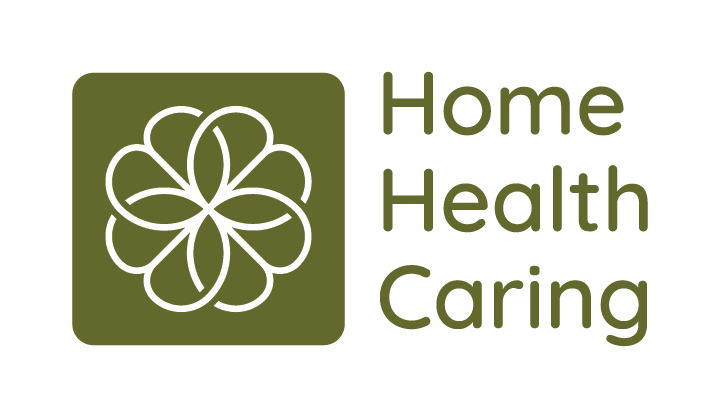
Engaging Family Caregivers in Hospital at Home Programs
By Anil Nachnani, MD and Madhavi Koli
Hospital-at-Home (HaH), or Acute Hospital Care at Home (AHCaH) programs, are designed to provide selective acute-level care to eligible patients in their homes instead of in a hospital. In 2020, the Centers for Medicare and Medicaid Services (CMS) implemented the Acute Hospital Care at Home Waiver, which establishes Medicare payment for home hospitalizations. To date, more than 114 health systems and 290 hospitals across 37 states have been approved to participate in the program.
CMS has identified over 60 different acute conditions that can be treated appropriately at home. The conditions include asthma, congestive heart failure, pneumonia, and chronic obstructive pulmonary disease (COPD). The patients are screened and enrolled in HaH for a specific acute care treatment and may include daily telemedicine sessions with a doctor, daily nurse visits, in-home physical therapy or blood tests. Oxygen machines and infusions, even a Wi-Fi enabled pill box to dispense meds on schedule can be delivered at home.
Key benefits of HaH include reduced hospital readmissions, lowered mortality rates, and cost savings. Studies have also found that treating patients at home helps prevent the onset of delirium, reduces the risk of infections and falls, and allows for increased mobility. Patients overwhelmingly prefer to be treated at home when possible. However, there are stringent socio-economic, insurance, and medical eligibility criteria required for these programs. Family caregiver education and engagement is also critical for any HaH program to scale successfully.
Payer and Provider Perspective
Payers and health plans prefer their patients to reduce the number of hospital visits. They generally support HaH, as studies have shown this care delivery model has lower readmission rates, lower payer costs, and higher patient satisfaction. Medicare’s home-based care reimbursement may save the payers more than 50% for HaH patients acute care, compared to the traditional hospital’s facility, professional, and ancillary service charges.
Health systems and large hospitals are also looking for such innovative care delivery models to counter diminishing profitability and staff shortages. However, large-scale adoption of these programs is slow to come. Health systems need to make committed investments in applying for CMS waiver, patient screening and outreach, setup clinical operations and home care staff, technology, and measuring quality metrics. The Medicare patients eligibility for HaH can vary 5%-50% across hospitals, making it challenging to make these programs financially viable.
Savings for the patients?
According to the American Hospital Association (AHA), 32 of the 34 studies comparing costs of HaH with those of hospitalizations, found HaH to cost less. A Health Information and Management Systems Society (HIMSS) white paper findings show that the in-home hospitalizations save between $5,000 and $7,000 per episode. However, the HaH programs are still evolving and there is no uniform method to track and assess costs or savings for the patients.
What are the actual patient’s out of pocket cost savings? The HaH studies focus on savings in the reimbursement rates for care and do not include costs incurred by patients and their caregivers. It also doesn’t account for the length of stay in HaH across diagnosis-related group (DRG) codes, and incremental expenses for over the counter (OTC) devices, medical supplies, as well as decluttering, sterilizing, and cleaning the home.
Family caregiver role in HaH
Family caregivers are often not seen as providing specialized care. In reality, caregiving responsibilities include symptom and equipment monitoring, medication management, helping patients with activities of daily living (ADLs), and setting up the home safely for patient’s treatment and recovery. The medical equipment may take space, interfering with other family members’ activities, especially for remote workers, or creating a hazard for young children. Not all homes have extra space to safely store medical supplies. Patients prefer and need a safe place, but caregivers need to make the home safe for the entire family. Despite their workload, the majority of family caregivers feel rewarded by the patient’s comfort level at home as opposed to being in the hospital.
As a family caregiver, if your patient requires frequent acute care hospitalization, talk to your physician to understand:
- If HaH option is available, and whether the patient can be screened for eligibility
- The specific responsibilities for a family caregiver, as opposed to the nurses and the care team
- The treatment, recovery, and care continuum plan at home, during and post discharge from HaH
- Any additional costs that are not covered by the health plan
Family caregiver support and engagement
As part of the HaH enrollment process, potential patients are asked about the availability of family members to help at home. For those identified as caregivers, a standardized and validated assessment tool elicits the caregiver’s availability, ability, and willingness to help. There is however, no uniform framework for education, training, and substantive support for the caregivers.
The AARP has embarked on a campaign to enact state laws called the Caregiver Advise, Record, and Enable (CARE) Act. Forty-four states and territories have versions of the CARE Act, which is intended to make hospital staff identify and document caregivers, involve them in care decisions, and instruct them on providing care at home after the patient transitions from the hospital. Additionally, they can:
- Add family caregiver education and advocacy resources for acute care to the HaH Users Group
- Include directory of local community resources for family caregivers and patients
- Include caregiver responsibilities and inputs in measuring care quality and patient outcomes
We hope the family caregiver inclusion at both policy and program level will drive the adoption of HaH as well as become a model for remote patient monitoring and other digital care delivery models.
References
CMS – Acute Hospital Care at Home
Health Affairs – Hospital at Home
Guidehouse acute hospital care
Harvard News- Home Hospital costs Gazette
National Alliance for Caregiving CARE Act

